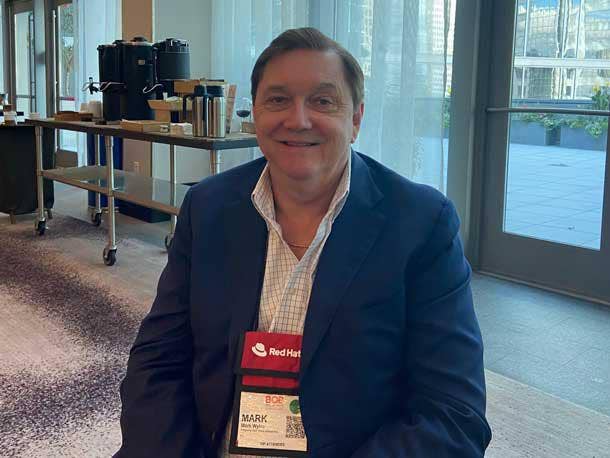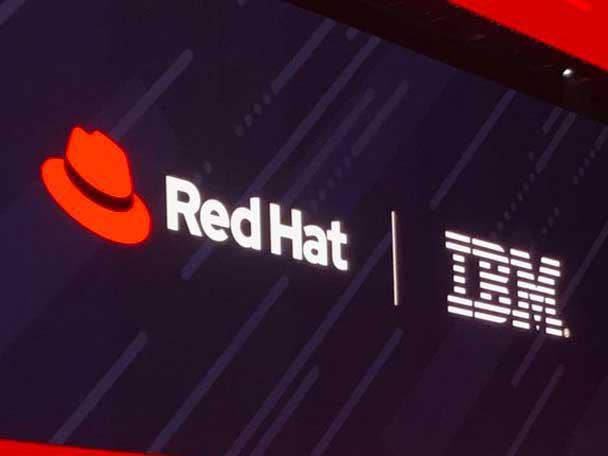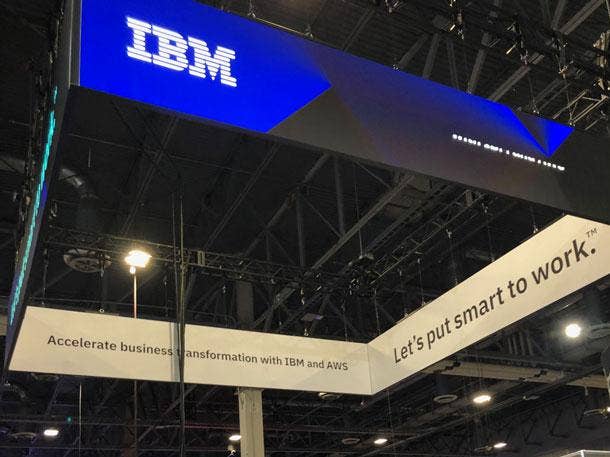Flagship CEO Mark Wyllie: ‘Seeing Signs’ Of Red Hat Channel Investment
‘I know originally the plan behind it was to get channel partners to be more engaged earlier on in the sales cycle. ... And I just think that that’s taking some time to happen, but we’re seeing signs that it is moving forward,’ Flagship Solutions Group CEO Mark Wyllie tells CRN.

Mark Wyllie, CEO of Flagship Solutions Group, a Red Hat and IBM partner, hopes to see Red Hat continue to involve partners earlier in deals while his business is at work introducing new offerings for customers and helping them adopt IBM’s recently launched Power10 servers.
Wyllie told CRN in an interview that vendors working with the channel is a benefit for all and that Red Hat still has some room for improvement.
“I just think that that’s taking some time to happen, but we’re seeing signs that it is moving forward,” Wyllie said about Red Hat becoming more channel-friendly.
[RELATED: RED HAT CEO MATT HICKS: PARTNERS KEY TO $1 TRILLION OPEN HYBRID CLOUD MARKET]
How Flagship Solutions Group Works With IBM And Red Hat
Newly installed Red Hat CEO Matt Hicks and his predecessor, Paul Cormier—now Red Hat’s chairman—told CRN in recent interviews that the vendor is making more investments in its channel partner program and views partners as key to spreading open-source software to growth areas such as edge environments and multi-cloud.
“Our partner community has always been a critical part of delivering to customers,” Hicks told CRN in a recent interview. “We’re just seeing more and more momentum in our focus on open hybrid cloud growth. And whether that’s in the enterprise space of customers moving from on-prem to cloud and from one cloud to multi-cloud, or if it’s from the inclusion in edge where there’s more industry-specific focus—partners are a critical link, whether it’s the MSPs or they’re systems integrators … so I think that will only increase as we go forward.”
Growing Red Hat’s business is “definitely partner-driven,” Cormier told CRN in a recent interview. “I would like to tell you we had this big revelation. But it’s got to be partner-driven. … Hybrid cloud is not a product, it’s an architecture. And it takes various products from companies like us as well as partner companies. We can’t do it all. It takes consulting services. It takes all kinds of partners to deliver that.”
Flagship Solutions Group’s relationship with Red Hat is mainly around its Ansible subsidiary focused on automation tools, although Wyllie and his team have also done work around Red Hat’s OpenShift containerization software suite, he told CRN.
Boca Raton, Fla.-based Flagship has been investing in customer offerings and sales staff following its merger with publicly traded Melville, N.Y.-based disaster recovery tools provider Data Storage, Wyllie said.
In June 2021, Flagship became part of Data Storage for $5.5 million, according to documents filed with the U.S. Securities and Exchange Commission. Data Storage’s other subsidiaries include CloudFirst and Nexxis.
In Data Storage’s latest quarterly earnings—reported for the second fiscal quarter, which ended June 30—the company reported revenue of $4.8 million, a 37 percent increase year over year. “The increase is primarily attributed to the additional sales from the Flagship merger and an increase in monthly subscription revenue,” according to the documents.
Earlier this year, Flagship partnered with the Professional Fighters League sports league to use cloud-based products and artificial intelligence to promote more engagement with mixed martial arts fans, including accurate matchup outcome predictions.
Here’s what else Wyllie had to say to CRN.

How has your company’s investment in growing the Red Hat practice going?
We have been primarily around Ansible and automation because we’re not really developers. I say that, and we’ve got a couple of accounts that we are selling OpenShift to because they are doing development.
But I’m looking at it more from a service provider angle of what we can provide to our customers in support of their Red Hat offerings.
Anything that Red Hat could do that would make things easier for Flagship?
It’d be great to see more opportunities where we can work together.
I know originally, the plan behind it was to get channel partners to be more engaged earlier on in the sales cycle because, in the past, their direct sales would be involved early on and then they would bring a partner in when it was further on down the road.
And I just think that that’s taking some time to happen, but we’re seeing signs that it is moving forward. … [It’s a matter of] training the salespeople. I think some of it is compensation. To be honest with you, I don’t know how or what they’ve done to change the compensation to help move in that direction. But most people are coin-operated. You have to follow how you get paid and how you get rewarded. … I don’t think they’ve gone so far as some other companies have where they say the rep doesn’t get paid if they don’t go through a channel partner. And to me, that’s the ultimate way to get it.

How goes the merger with Data Storage?
With the merger with Data Storage, they’ve renamed the operating company to CloudFirst. And we’re working on really trying to leverage the capabilities that both companies have to provide that to the customer.
We’re doing a little bit of our own reorganization and Tom Mitchell, who’s my VP of sales … he’s taken over as VP of sales overall for Data Storage. So I think that that will definitely help with cross-selling on our end.
[Mitchell has the acumen] and CloudFirst has the offerings pretty cookie-cutter-simplified. So we should be able to scale that business faster than we have in the past.
Is Flagship hiring?
The plan is to continue to increase our sales. Last fall, we added business development reps that we hadn’t had before. And so we’re just going to continue to build out our sales team.
How’s the merger helped customers?
They’ll see an expanded offering set that we provide. And I think what it’s done is it’s allowed us to really expand more on our existing customers with the capabilities that CloudFirst has.

What are you hoping to see from IBM looking forward?
The Power10 just got launched. And we’re actually doing an event at Mercedes-Benz Stadium in conjunction with the [Atlanta] United [professional soccer] game … for IBMers and end-user customers in the Atlanta area.
Between now and the end of the year, typically, when there’s a refresh cycle on the Power systems, there’s a pretty good bump in sales because people want the additional capacity capabilities.
And so we’re jumping on that pretty quickly. And from a marketing perspective, especially to be able to get out in front of that with customers and prospects for them to understand what it provides and why they should make the shift. … One of the things that I see with Power10 is I think the customers—while they are looking to move to the cloud—there’s still a pretty large segment of customers that want to have an on-premises aspect to their solution.
One of the advantages with CloudFirst is we can offer both on-prem in terms of the IBM Power10 upgrade and then in terms of backup disaster recovery.
Typically customers would reuse the equipment that they already had. This will give them the alternative to be able to make the move to the cloud while at the same time running their enterprise on a day-to-day basis on-premises as they still continue to consider the options of moving more and more out to the cloud in general. [The growth of hybrid cloud], that’s what we want to try to capitalize on.

Have you seen any effects on business from the inflationary environment or talks of a recession?
I don’t know that it’s necessarily changed the conversation. I do think people are trying to read the tea leaves a little bit about where it’s going to go.
But in the end, typically, technology adoption, in my opinion, in down economic climates usually increases, not decreases.
And especially with the move to cloud and more of an Opex, it’s a safer way to go than maybe necessarily buying new equipment the next time around. … The pandemic, that accelerated a lot of customers moving to the cloud because they didn’t necessarily want their engineer or the engineer didn’t want to go to the data center to do work. … I do think people are taking a little bit of a wait-and-see attitude on what is going to happen with the economy.
The jobs numbers that came out, that’s promising on one hand and then turning on the other. Every piece of good news has its upside and a downside.
But in general, technology’s usually more viewed as an enabler, something that people will continue to do at some level, even in a down economy.
What Flagship offerings are hot right now?
On analytics, we are working on the aggregation of a lot of social media to be able to provide a consolidated dashboard for customers so that they can get all their Facebook, Sprout, those different tools, but all consolidated into a single dashboard.
So that’s a project we’re working on right now.
How many employees do you have?
About 70.